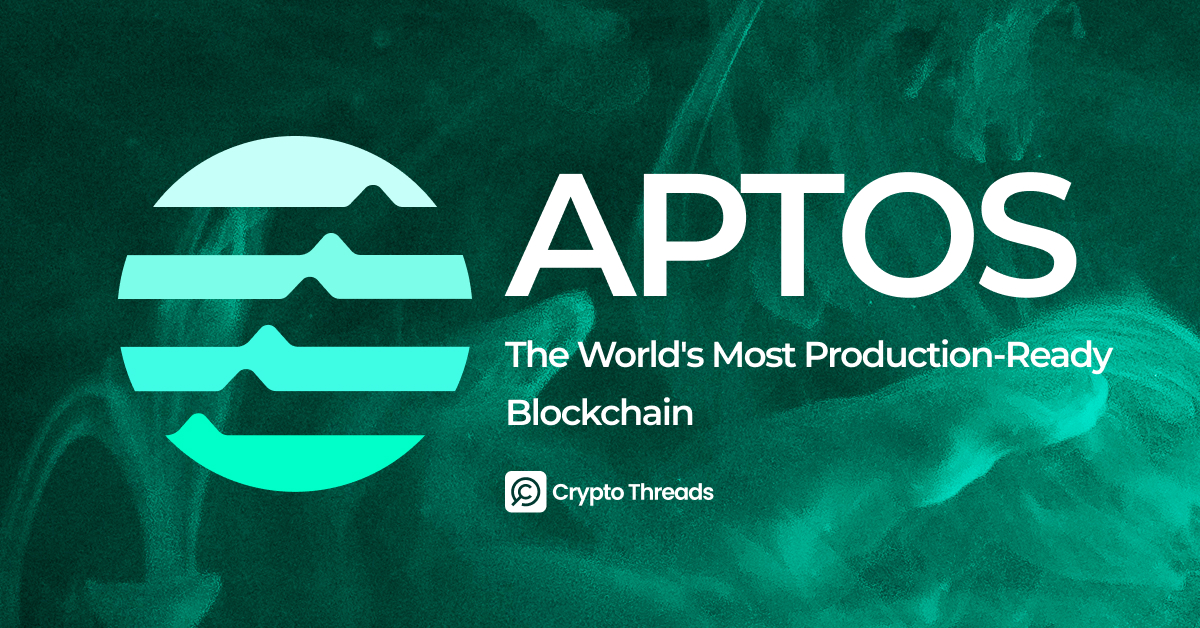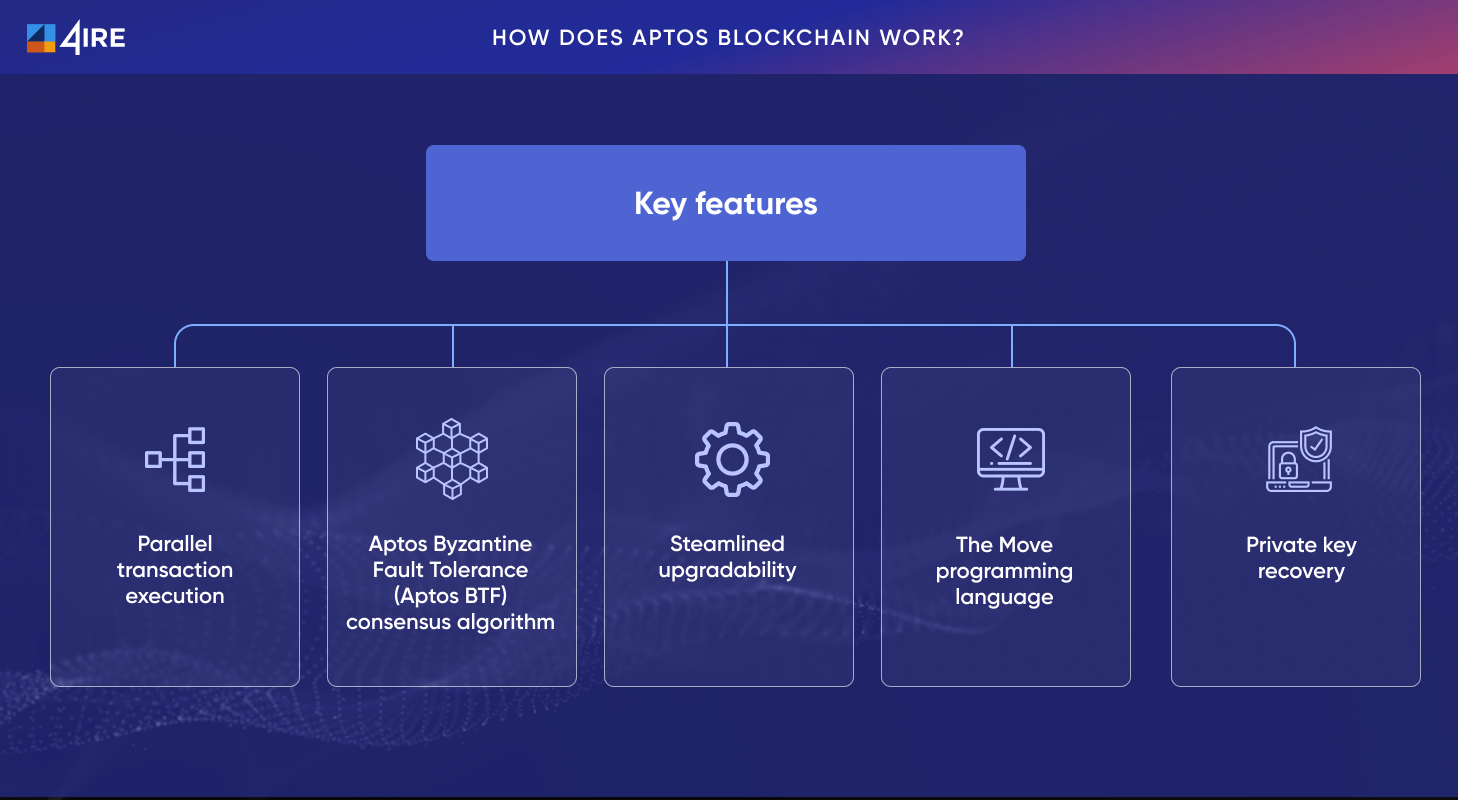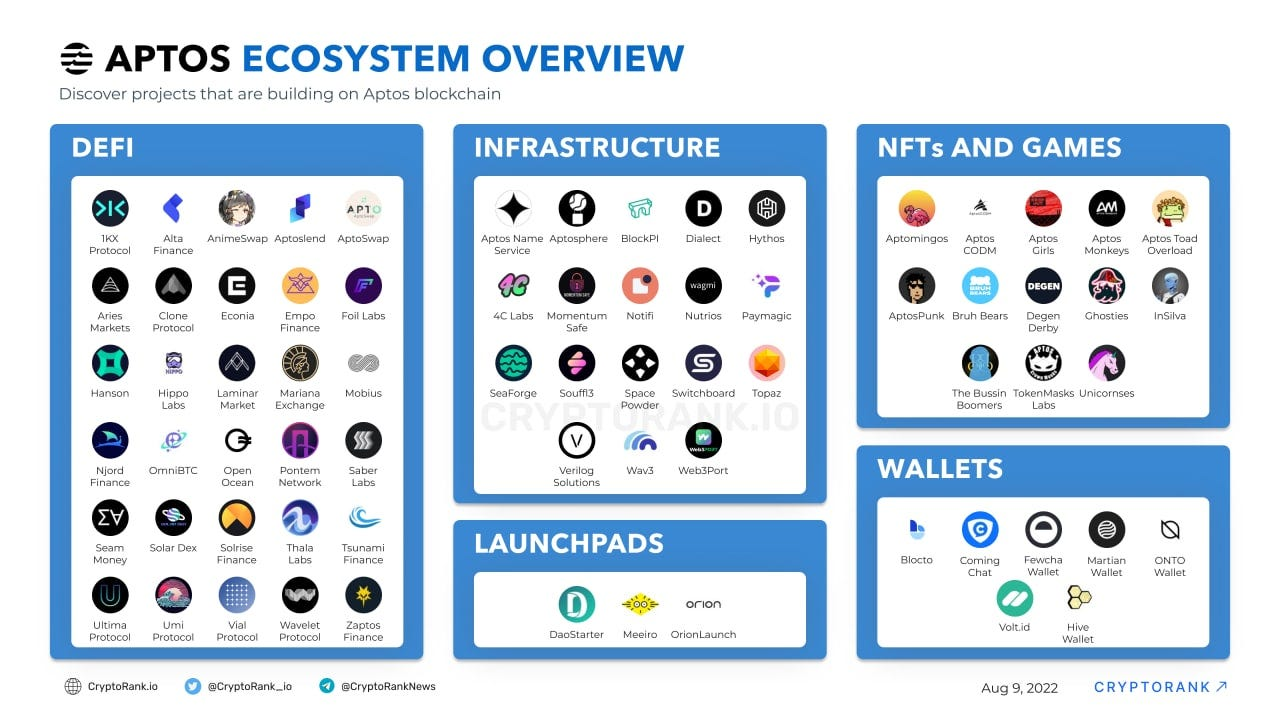Aptos Blockchain Delivers Scalability Safety and Real-World Applications
What is Aptos?
Aptos is a Layer 1 blockchain that aims for scalability, safety, availability, and upgradeability. Carrying the legacy of its predecessors, the Libra and Diem projects, Aptos sees its mission as delivering a mainnet that can enable mainstream Web3 adoption. Its goal is to create a real-world problem-solving ecosystem of dApps.

Aptos aims to do this through a modular blockchain architecture capable of frequent upgrades and the adoption of cutting-edge technology and new use cases. These seven foundational principles of that blockchain give fast and secure transactions using an auditable and mechanically analyzable move programming language. Batch, pipelined, and parallel transaction processing enable high throughput and low latency. This is made possible with Block-STM, a novel parallel transaction processing system that allows atomicity to complex transactions. Validators will prioritize their performance with stake-weighted, rotating/short-staking and reputation-based staking to balance the power of performance optimization with decentralization. The Aptos protocol is built to upgrade and configure itself for new technologies and use cases. It has a modular architecture that facilitates component-wise experimentation, and sharding is a first-class concept implemented to attain horizontal scalability while retaining decentralization.
How Does Aptos Work?

Understand how Aptos Blockchain Works (Source: 4ire)
Consensus Mechanism
The Aptos blockchain employs its own Byzantine Fault-Tolerant (BFT), Proof-of-Stake (PoS) consensus mechanism. Token holders stake their tokens in validators, and each validator’s vote is weighted based on the amount of stake it controls. Validators can either be active or inactive; inactive nodes are removed due to insufficient stakes, synchronization, or poor performance. The BFT design ensures the network remains operational and secure even if up to one-third of validators behave dishonestly.
Move Language
Aptos leverages the Move programming language to control ledger state and validate transactions. Move imitates modules to furnish resource lifecycles, storage, and access patterns so that tokens cannot be minted without corresponding credentials, double-spent, and lost. Move is a safety- and flexibility-oriented programming language with a compiler, virtual machine, and developer tools built upon inspiration from Rust. Move was improved by Aptos in order to accommodate a variety of Web3 use cases that require accurate resource granularity when tasks can run concurrently. The design is optimized for large data sets in areas like scalable NFT collections and on-chain self-sovereign account management for complex decentralized autonomous organizations (DAOs).
Transaction Processing
Transaction processing on the Aptos network is broken down into independent stages, allowing for parallel execution similar to a modern superscalar processor. This modular architecture not only improves performance but also speeds up updates, allowing changes to be focused on individual components. It also creates a clear path for validators to scale by accessing advanced storage and compute resources.
Homogeneous State Sharding
While Aptos initially launched with a single ledger state, it has integrated horizontal scalability through sharded ledger states. Each shard maintains a consistent API and allows for data transfers via homogeneous bridges. Developers can customize sharding schemes to meet application needs, leveraging specific system characteristics like compute-optimized or storage-optimized shards for maximum efficiency.
Aptos Blockchain Use Cases

Aptos Ecosystem Overview (Source: CryptoRank)
The Aptos blockchain supports over 206 dApps across categories like gaming, NFTs, social media, entertainment, and DeFi. In gaming, Aptos ensures fast, seamless gameplay and secure asset management, empowering players with ownership of their in-game assets. Prominent gaming projects include STAN, Aptos Arena, Supervillain Studio, Undying City, and Werewolf vs. Witch. In NFTs, Aptos enables creators to design diverse collections such as Bruh Bears and MAVRIK, with platforms like Aptos Art Museum and NFTScan fostering innovation in digital assets.
For social media, Aptos supports decentralized platforms like Chingari, allowing users full control of their digital presence. Other social initiatives include BuilderDAO and Mereo. In entertainment, Aptos enhances fan-creator interactions by enabling blockchain-powered ticketing and collectibles trading, exemplified by projects like WonderBus Festival and Free Renfield. Aptos is also a leading platform for DeFi innovation, supporting fast, low-cost transactions. Mastercard leverages the network for its Crypto Credential tool, focused on identity verification. Notable DeFi apps include Merkle Trade, READYgg, and VIP99.
Aptos Native Token—APT Tokenomics
The native token of the Aptos blockchain is Aptos ($APT), with a maximum supply of 1,090,000,000 tokens. The smallest unit of the token is called an Octa, representing eight decimal places.
Token Distribution
APT tokens are distributed as follows: 51.02% (510,217,359.767 tokens) for the community, 19% (190,000,000 tokens) for core contributors, 16.50% (165,000,000 tokens) for the foundation, and 13.48% (134,782,640.233 tokens) for investors.
The community and foundation hold over 410.2 million tokens, which are allocated for ecosystem growth and distributed over ten years. Initially, 125 million tokens are set aside for community projects, while five million tokens support foundation initiatives. One-twelfth of the remaining tokens will unlock monthly.
For core contributors and investors, all tokens are locked for four years after the mainnet launch. Unlocking begins in the 13th month, with gradual releases until all tokens are available by the fourth anniversary.



